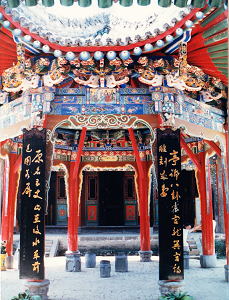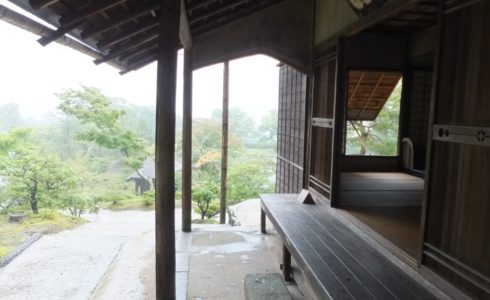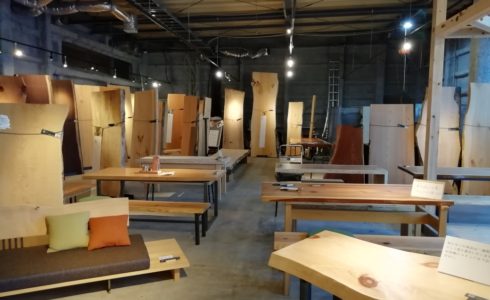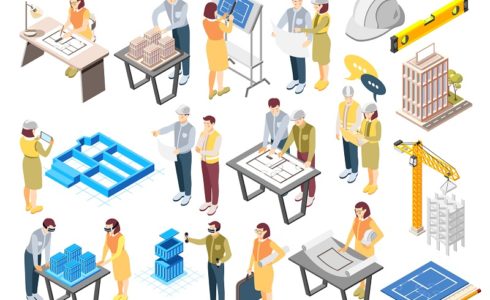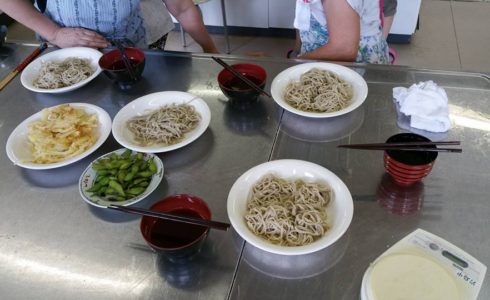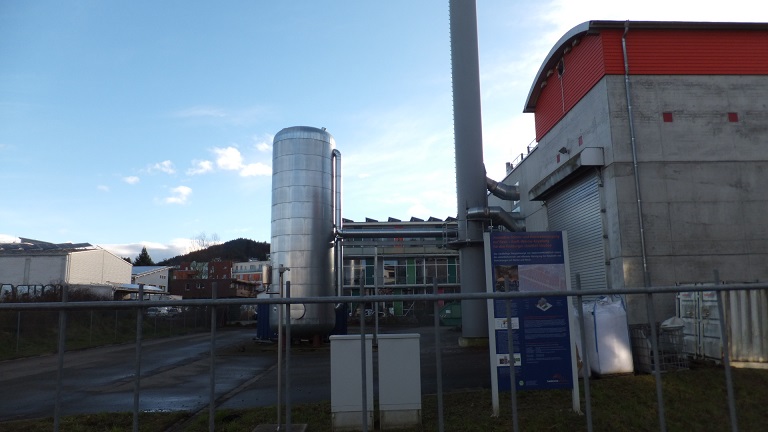
Issues the story of MOMO addressed
I recently read the German children’s book MOMO, which made a very deep impression on me. MOMO is mysterious and it seems to be trying to tell us something, but it doesn’t say exactly what it is. So I made a presentation about MOMO in order to discuss it with someone. The following text is a slightly modified version of that presentation for the blog.
===
Today I would like to share with you some key points in the children’s story MOMO, and how I interpret social issues implied in the story. MOMO is one of the world’s best-selling books, written by German stage director Michael Ende and translated into over 30 languages. I have recently read MOMO for my first time.
First of all, let me give you a little description of MOMO. In the story, there is a little girl called Momo. She is very good at listening to people. And she has many friends in the small town. In this town, people enjoy life, talking and singing.
One day, a group of men in grey suits came to town. They said they were agents of the “Time Saving Bank”. And the grey men persuade the people to save their time and work faster. The real job of the grey men is to steal people’s time.
As a result of accepting the suggestions of the grey men, people are deprived of time to spend with family and friends, time to be themselves.
Without realizing it, Momo interferes with the grey men in their time-stealing work. As a result, Momo has to take the lead in the fight against these grey men. If you are interested in the rest of the story, please read MOMO.
In order to understand the social background behind the story, we need to know when the story was written. Michael Ende, the author of MOMO, was born in 1929 and died in 1995. MOMO was first published in 1973.
I read MOMO and was interested in what the grey men meant. I found a video of Michael Ende being interviewed. He talked about the money system in the interview. He said that rapid economic growth was combined with sacrifice and environmental destruction in countries with resources. The way the grey men control the people in MOMO is the same as the way the money system controls people in the real world.
So, what are the social issues raised by MOMO? The money system is increasingly controlling our entire lives. I think that is the issue to be discussed.
One aspect that causes issues in our lives is the fact that we are very dependent on oil, coal, and natural gas. This causes the destruction of nature of the countries with rich resources.
Another problem is that we buy a lot of our resources and products and services from global markets. The reason why this is a problem is because this means that local people is underpaid, local economies are going into recession and the many people are getting poorer and poorer.
Is there a solution to these issues caused by the Money System? There are many answers to this question, but today I would like to introduce two real-life examples that focuses on the economy of the local region. I think these examples may provide us a hint on how to solve some issues that we currently have.
I watched a video about Michael Ende that highlighted some of the unique approaches to the money system. One of the parts I saw was in Ithaca, USA, a city of 30,000 people, where there is money in circulation that can only be used in that city. According to the video, the money was used to make purchases, which stimulated the exchange of goods and services within the community and made it easier for community members to get to know each other and build trust. Various people, including the representative of the county, shop staff and farmers, said that the money has stimulated the local economy.
In Japan, there are places that have offer a coupon issued by the ward or city to be used at local businesses. I believe this is a similar system.
Next, I will share with you an example of using resources available in the region to support the local businesses. This is an example of sustainable local management in a housing Estate in Germany. Five thousand people live in this residential area. You can find out more about this residential area by reading Atsushi Murakami’s book “Town Planning in Freiburg”. This book is written in Japanese.
I was particularly surprised to find that the following three policies had been adopted for the construction of this residential area. ・Woodchips, available from nearby forests, are used for heating and electricity generation. ・In order to save heating energy, only houses with materials that do not transfer heat are allowed to be built. ・Walking, cycling and public transport are given absolute priority.

The building in this picture is the heating and power generation plant. Woodchips, available from nearby forests, are burned here, for heating and electricity generation.
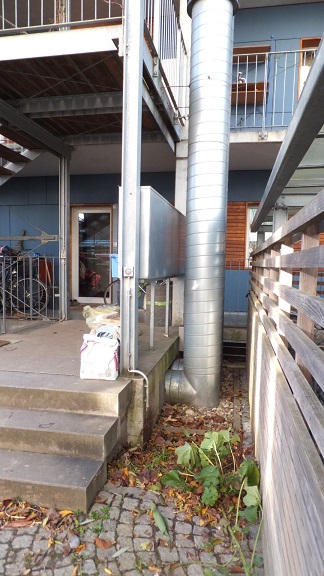
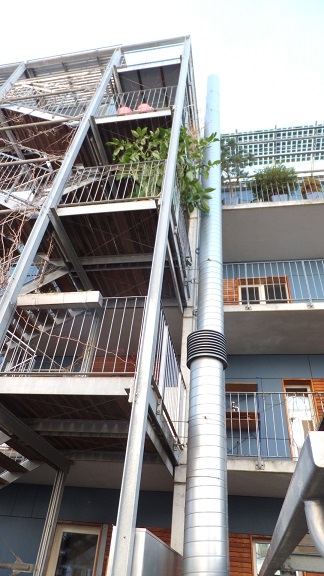
The large pipes in the picture on the right are used to send heating air from the plant to the houses.
Buying oil, coal, natural gas drains a lot of money out of the region. On the other hand, if you use resources available in the region, money can circulate within the region.
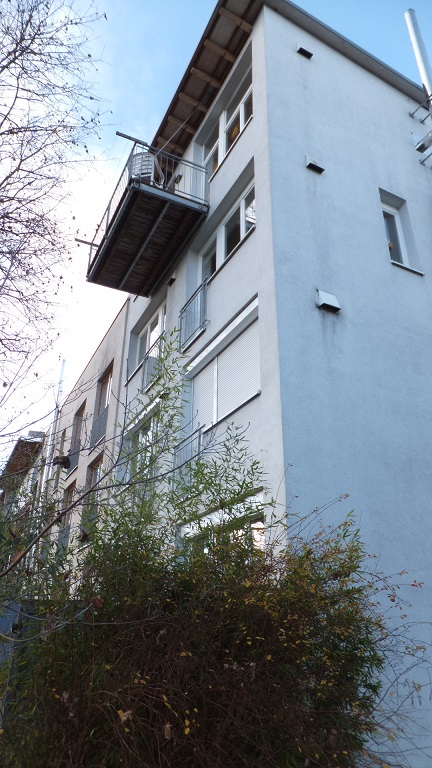
From what I could see from the outside, the materials that prevent the transfer of heat inside the house was about 30 cm thick. The climate in this location is about 5 degrees cooler than Tokyo in winter, but the preventing the transfer of heat is of a relatively high standard.
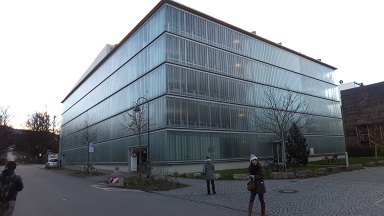
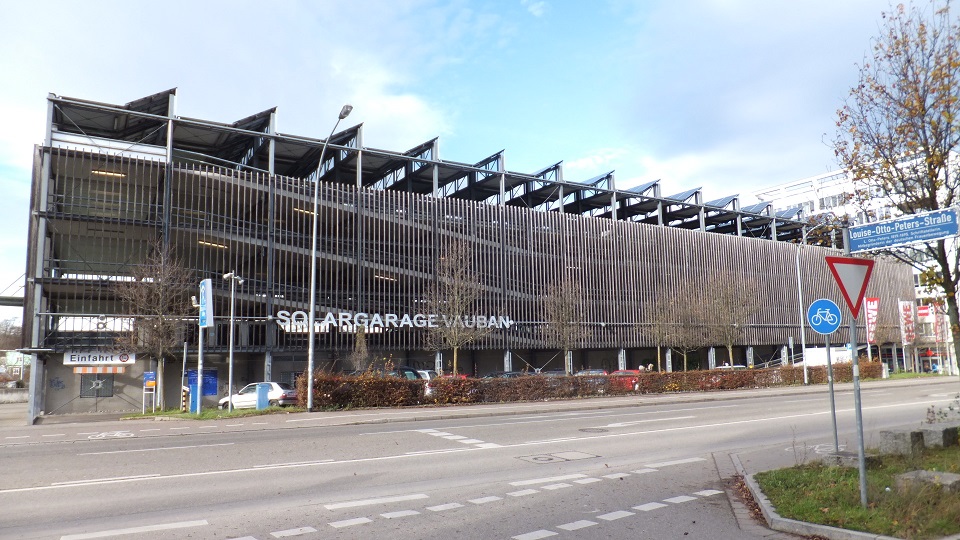
These pictures show Parking for personal vehicles, which are collected in two places.
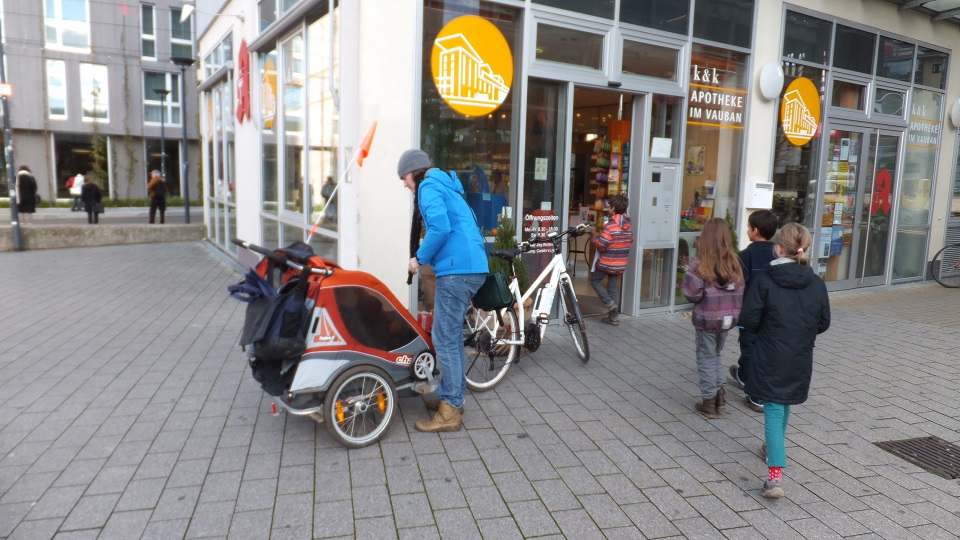
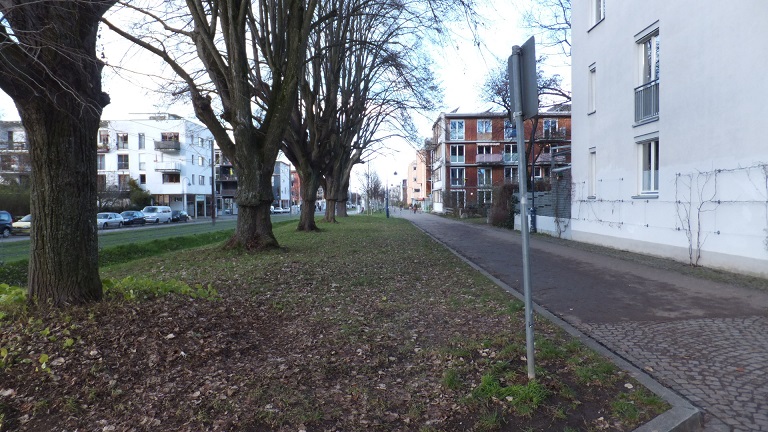
They restrict where cars can enter, so that children can play safely in the street. In MOMO, it was critically described how children are gathered in “children’s houses” and deprived of their freedom to play in the streets.
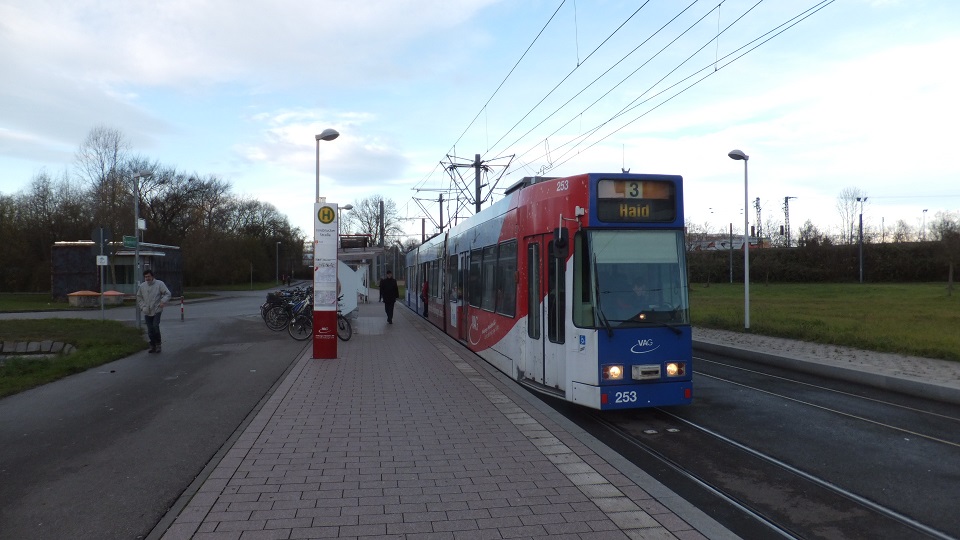
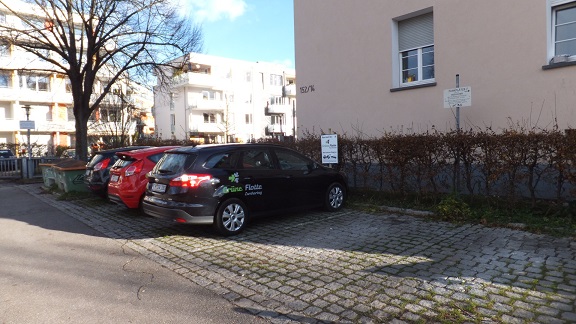
Trams and car-sharing systems make it easier for people to live without a car.
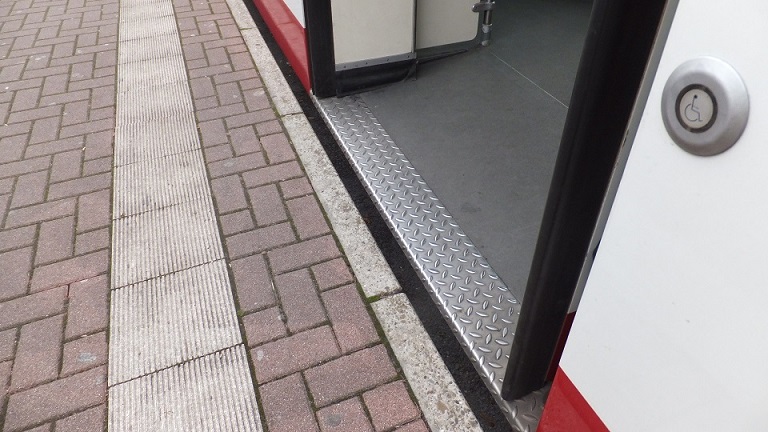
There are no steps between the tram and the stop. This means that people in wheelchairs and people with babies can travel freely without petrol. This kind of system is beneficial because it will help diverse people to participate in society. In addition to that, it will also lead to an increase in the income of people working in the community.
These are two examples of money systems. Both are examples of how the economy can be stimulated in the community.
Now, let me briefly summarize. Today, I quickly introduced the story of MOMO and talked about the issues I think were raised by the author. I mentioned two examples of how local economies are run creatively. Do you think these are good examples of managing the local economy? I would like to hear your opinions too.
This closes my presentation. Thank you for your time.

